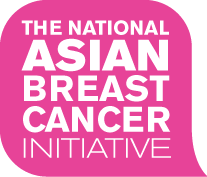5 REASONS WHY “ASIAN”
There seems to be a persistent and pervasive misconception among medical professionals in the U.S. that “Asian women don’t get breast cancer”(1) Breast cancer is the most commonly diagnosed cancer among Asian American women (2). Cancer is the leading cause of death for female Asian Americans (13).
A majority of Asian-American women are immigrants from Asia, where breast cancer rates are historically low (8). Many of them aren’t aware that if they live in the U.S. for more than 10 years, they increase their chances of developing breast cancer by up to 80% (9). Rates for invasive breast cancer for Asian women have actually increased every year from 1988 to 2005 and have yet to decline (3).
Asian women are the least likely to get a mammogram in the U.S. (2) But studies show that breast cancer is being diagnosed at a relatively younger median age among Asian women, so it’s more important for them to be vigilant about regular screenings (7).
Genetically, Asian females tend to have “dense breasts” (10) where mammograms may miss up to 60% of cancers in women with dense breasts (11). As a result, Asian females with higher mammographic density may require more expensive and therefore harder-to-approve ultrasounds and MRIs to detect breast cancer early (10).
Asian immigrant women face unique cultural, psychological and language issues when dealing with breast cancer. There is currently no national organization or project that addresses breast cancer among Asian Pacific women, yet there are unique cultural (12), linguistic and genetic challenges specific to these populations in facing this disease.
References
1. Asian women don't get breast cancer?. (2013, May 28). Retrieved from http://audreymagazine.com/asian-women-dont-get-breast-cancer-2/
2. Minority women's health. (2010, May 18). Retrieved from http://www.womenshealth.gov/minority-health/asian-americans/breast-cancer.html
3. Morris CR, Epstein J Nassere K Hofer BM Rico J Bates JH Snipes KP. Trends in Cancer Incidence, Mortality, Risk Factors, and Health Behaviors in California. Cancer Surveillance Section. 2010. Sacramento, CA, California Department of Public Health.
4. Murphy, S., Xu, J., & Kochanek, K. (2013). Deaths: Final data for 2010. National Vital Statistics Reports,61(4), Retrieved from http://www.cdc.gov/nchs/data/nvsr/nvsr61/nvsr61_04.pdf
5. Yi M, Liu P, Li X, et al. Comparative analysis of clinicopathologic features, treatment, and survival of Asian women with a breast cancer diagnosis residing in the United States. Cancer. 118(17):4117-25, 2012.
6. Gomez, S. (2013, July 22). Trends among major Asian American groups. Retrieved from http://www.cpic.org/site/c.skI0L6MKJpE/b.8780665/k.8421/Cancer_Facts.htm
7. More Asian women being diagnosed with breast cancer. (2007, September 28). Retrieved from http://www.breastcancer.org/research-news/20070928
8. Yip, C. (2009). Breast cancer in Asia. Methods in Molecular Biology, 471, 51-64. Retrieved from http://www.ncbi.nlm.nih.gov/pubmed/19109774
9. (1993). Migration patterns and breast cancer risk in Asian-American women. National Cancer Institute, 85(22), 1819-27. Retrieved from http://www.ncbi.nlm.nih.gov/pubmed/8230262
10. Leung, T. (2012). The application of breast MRI on Asian women (dense breast pattern). In L. Tabar (Ed.),Imaging of the breast: Technical aspects and clinical implicationRetrieved from http://cdn.intechopen.com/pdfs/32006/InTech-The_application_of_breast_mri_on_asian_women_dense_breast_pattern_.pdf
11. Beck, M. (2012, August 06). The latest mammogram controversy: Density. The Wall Street Journal, Retrieved from http://online.wsj.com/news/articles/SB10000872396390444246904577573181463638846
12. Tam Ashing, K., Padilla, G., Tejero, J., & Kagawa-Singer, M. (2003). Understanding the breast cancer experience of Asian American women. Psychology, 12(1), 38-58. Retrieved from http://www.ncbi.nlm.nih.gov/pubmed/12548647
13. Asian American Network for Cancer Awareness, Research and Training. Available from: URL: www.sp.ohiostate.edu/aancart/About_AANCART.htm
